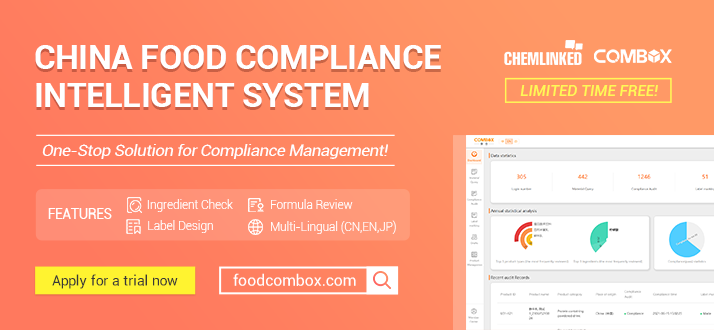2019 Compliance Review: Disinfectants Regulatory Updates in China, EU and US
[China] Requirements for the Health and Safety Evaluation of Disinfection Products is Officially Implemented
On March 1, 2019, a set of requirements for the health and safety evaluation of disinfection products was officially implemented by the National Health Commission of the PRC as mandatory technical standards, stipulating the basic requirements and content of sanitary safety evaluation of disinfection products. Health and safety assessments of disinfection products have proven strong practicality and operability.
[China] National Health Commission Has Twice Sought the List of Active Ingredient of Antibacterial/ Bacteriostatic Lotion (Draft for Comments)
The National Health Commission of the PRC entrusted the Disinfection Professional Standards Committee to analyze the effective ingredients of non-plant antibacterial agents, study the prohibited substances, summarize and refer to the regulatory models of antibacterial agents in the United States, Japan and the European Union, and formulate the list of active ingredients and inclusion principles in line with the actual situation in China. At the same time, it has requested research by the National Health Commission, CDC, supervision and law enforcement agencies and relevant enterprises several times to form the List of Active Ingredients for Antibacterial/ Bacteriostatic Lotion (Draft for Comments). The draft specifies that the active ingredients of antimicrobial agents and bacteriostatic agents can only be used on intact skin and mucous membrane of the human body. Additionally, these agents are suitable for direct application on human skin, oral and vaginal mucosa –excluding specific parts such as feet, eyes, nails, armpits, scalp, hair, nasal mucosa, anorectum, etc. Despite them having certain bactericidal or bacteriostatic (bacteria and yeast) effects, these cannot be used to treat diseases or improve the skin and mucous membranes.
[China] Release of Group Standard Hygiene Requirements for Carrier Disinfectant
The China Inspection Association released the country’s first standards on carrier disinfectants, which is mainly associated with disinfectant wipes, on August 22, 2019.
It specifies the classification of carrier disinfectants, raw material requirements, technical requirements, test methods, scope of application, usage, labeling and packaging, transportation, storage and precautions. The standards clearly states that disinfection wipes are carrier disinfectants which can be used to sanitize hands, skin, mucous membranes, surfaces of common everyday objects, environmental surfaces, medical equipment and medical supplies, additionally providing a basis for market supervision and compliance requirements. provides the corresponding basis for market supervision and compliance requirements. As regards disinfectant wipes, the standard clearly states that disinfectant wipes are carrier disinfectants which canbe used for hand, general skin, mucous membrane hygiene, common surfaces, environmental surfaces, medical devices and medical supplies.
[China] Sandards for Disinfection Products Promulgated by the National Health commission in 2019
▪ WS/T 646—2019 Hygienic requirements for sodium percarbonate disinfectants
▪ WS/T 647—2019 Hygienic requirements for Lysostaphin and lysozyme disinfectants
▪ WS/T 648—2019 General Hygienic requirements for air sterilizers
▪ WS/T 649—2019 Hygienic requirements for Medical low temperature steam formaldehyde sterilizer
▪ WS/T 650—2019 Evaluation methods for antimicrobial and bacteriostatic effects
▪ WS/T 651—2019 Evaluation requirements for medical low-temperature steam formaldehyde sterilization indicators
[EU BPR] The launch of the EU’s First Law Enforcement Project on Biocide Disposal
The EU’s first biocide disposal enforcement project (bef-1) regulation was launched in January 2019 and will be conducted throughout the year. The inspection will be carried out in 28 countries in the European Union and the European Economic Area. It is mainly aimed at processing items used by consumers and professionals which include Children’s clothing and sportswear, other specialty products such as construction products, swimming pool equipment or personal safety equipment.
[EU BPR] ECHA Releases a New Biocide Environmental Risk Assessment Tool — EUSES
On October 1, 2019, the European Chemicals Agency ECHA officially released a new version of the EU substance evaluation system EUSES 2.2.0. This new system is designed to better assist companies in assessing the environmental risks posed by biocide actives.
[EU BPR] The European Biocidal Products Committee Has Made a Decision on the Approval of Some Active Substances and the Authorization of Products
By December 2019, the EU’s Biocidal Products Committee (BPC) had held several seminars which were mainly made relevant resolutions on the following approvals of biocide active substance and applications for unified product authorization.
Not Approved:
▪ Application for active substance of product type PT9(fibre, leather, rubber and polymerised materials preservatives)in carbendazim
▪ Application for active substance of product type PT4 (food and feed area)in DBNPA
▪ Product group unified authorization for mixed products type PT4 in octanoic acid and decanoic acid
▪ Product group unified authorization for mixed products type PT4 in permethrin and Methoprene
Approval to be Determined:
▪ Application for active substance of product type PT18 (insecticides, acaricides and products to control other arthropods)in azametiphos
▪ Application for active substance of product type PT19 (repellents and attractants)in epsilon-metofluthrin
Approved:
▪ Product group unified authorization for product PT 3 (veterinary hygiene disinfectants)in iodine/PVP iodine
▪ Product group unified authorization for product PT 2 (disinfectants and algaecides not intended for direct application to humans or animals)and PT4 (Food and Feed Area) in propan-2-ol
[US EPA] PRIA 4 Has Been Promulgated, Revised PIA Fee Schedule for Disinfectant Registration Applications Has Taken Effective on October 1, 2019
On March 8, 2019, the U.S. Environmental Protection Agency issued PRIA 4. It is used to support the registration fee and annual maintenance fee for the review of disinfectant tools and re-assessment of registered disinfectants, thus removing the limit of the EPA annual fee. On October 11, 2019, EPA released a list of updated pesticide registration service fees applicable to specified pesticide applications and tolerance actions. Referring to the promulgated PRIA 4 Act, the registration service fee covering disinfectant registration applications received on or after October 1, 2019 will increase by 5%, and the revised fee will remain unchanged until September 30, 2021.
[US EPA] EPA Proposes a Plan to Ensure the Effectiveness of Hospital Disinfectants to Help Reduce Infections and Improve Patients ‘Safety
On October 2, 2019, EPA announced a new strategic draft aimed at selecting and testing hospital disinfectants to ensure that these products continue to be effective once they enter the market. Although EPA ensures that disinfectant products are effective before they are sold, the new strategic draft Antimicrobial Performance Evaluation Program (APEP) takes further steps and proposes a risk-based approach to confirm that hospital disinfectants are still effective and can be used correctly after registration.




